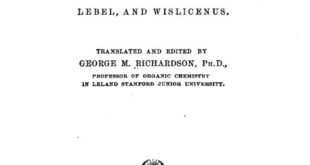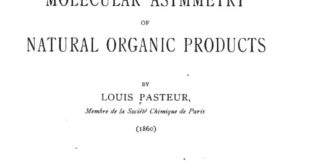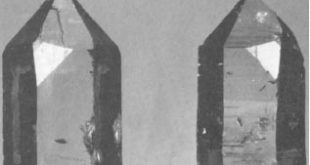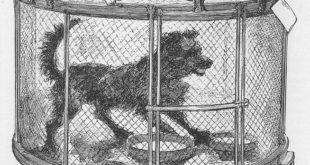October 26, 1885.— A Method for the Prevention of Rabies after the Bite of a Rabid Animal. — The prophylaxis of rabies such as I exposed it in my own name and in the name of my fellow-workers in my preceding notes certainly constituted a real progress in the study of that disease. But the progress realised was more scientific than practical. In application it exposed to various accidents. Not more than fifteen or sixteen dogs in twenty could be made refractory to rabies with certainty.
It was advisable, on the other hand, to end the treatment with a last and very virulent inoculation, a control inoculation, in order both to confirm and to strengthen the refractory state. Furthermore, simple prudence required that one should keep the dogs in sight for a longer period than that of the incubation of the disease as produced by the direct and isolated inoculation of this last virus, so that it was occasionally necessary to wait three or four months before gaining the assurance of having produced a refractory state.
Such serious exigencies would considerably limit the scope of the method in practice.
Finally, it would have been difficult to put the method to emergency uses at a moment’s notice, a condition required of it nevertheless, if we consider how casual and unforeseen are the bites of mad animals.
It was necessary, therefore, if possible, to discover a more rapid method, and one capable of giving, if I may so speak, a state of perfect security in the dog.
And it was impossible, too, before that desideratum was realised, to think of making any trial of the method on man.
After, I might say, innumerable experiments, I have at last found a method of prophylaxis both practical and rapid, and one which has proved successful in the dog with so much constancy in such a considerable number of cases already, that I feel confident of its general applicability to all animals and to man himself.
This new method rests essentially on the following facts : The rabbit, inoculated under the duramater, after trephining, with the spinal marrow of an ordinary mad dog, is always affected with rabies ; it takes the disease after a length of incubation averaging about fifteen days.
If a second rabbit be inoculated from that first one, a third from the second, and so on, always by tlic same mode of inoculation, there is soon manifested in the succeeding rabbits a growing tendency towards a shorter incubation.
After a number of passages through rabbits, varying from the twentieth to the twenty-fifth, tin incubation falls down to eight days, which remains the normal incubation time for the next twenty or twenty-five passages. Then it reached an incubation of seven days only, and recurring with striking regularity up to at least the 90th passage, which is the point we have reached at present, and there is barely as yet a slight tendency towards a shorter period of incubation than seven days.
The series was begun in November 1882, and has now lasted three years already. It has never once been interrupted, and never has it been necessary to have recourse to any other than the virus of rabbits of the same series which had previously died of rabies. Nothing is easier, therefore, than to have constantly at one’s disposal, for considerable lengths of time, a virus of perfect purity and always identical with itself or as nearly so as possible. Therein lies practically the whole secret of the method.
The spinal marrows of the rabbits are virulent throughout the whole of their substance, with constancy of the virulence. If from those marrows we take portions a few centimetres long, using all possible precautions to keep them pure, and then suspend them in a dry atmosphere, their virulence diminishes slowly until at last it is all lost. The time that the virulence takes to disappear entirely varies somewhat with the thickness of the marrows, but most of all with the outside temperature. The lower the temperature, the longer is the virulence preserved. These points constitute the scientific part of the method.
After those preliminary explanations, here is the process for rendering dogs refractory to rabies in a relatively short time.
In a series of flasks, the air inside which is kept dry by dropping pieces of caustic potash into it, suspend every day a portion of fresh spinal marrow taken from a rabbit which has died of rabies of seven days’ incubation. Every day also inject under the skin of the dog to be made refractory a full Pravaz hypodermic syringe of sterilised broth in which has previously been triturated a small piece of one of the drying marrows. Begin with a marrow old enough to make sure that it is not at all virulent. Previous experimentation will already have settled that point. On the succeeding days proceed in the same manner with fresher marrows, and use those of every second day, until finally we inoculate a last and very virulent one which has been drying only one or two days.
The dog has now become refractory to rabies, and will not take it anyhow inoculated, under the skin or on the surface of the brain.
Making use of this method, I had already rendered fifty dogs of all ages and of all races refractory to rabies, without having met with a single failure when, unawares, on Monday, July 6 last, three persons coming from Alsace presented themselves at my laboratory ; they were —
Theodore Yone, a grocer from Meissengott, near Schelstadt, bitten on the arm on July 4 by his own dog, which had become mad.
Joseph Meister, nine years old, bitten also on July 4 at eight o’clock in the morning, and by the same dog. This child had been thrown down by the dog and had received numerous bites on the hand, the legs and thighs, some of them so deep that he could scarcely walk. The principal wounds had been cauterised with carbolic acid by Dr. Weber, of Ville, on July 4, at eight o’clock in the evening, twelve hours only after the accident.
The third person was the mother of little Joseph Meister, and had not been bitten.
The dog had been killed by his own master, and on opening his stomach it had been found stuffed with hay, straw, and chips of wood. The animal was certainly mad. Joseph Meister had been rescued from him all covered with saliva and blood. Mr. Vone had been severely contused on the arms, but he assured me that his shirt had not been traversed by the fangs of the dog. I told him there was nothing to fear, and that he could go home that same day, which he did. But I kept with me little Meister and his mother.
The weekly meeting of the Academie des Sciences was held on that same day, July 6. I saw there our colleague Dr. Vulpian, to whom I related what had occurred. Dr. Vulpian, joined by Dr. Grancher, professor at the School of Medicine, kindly consented to come at once and see the state and the number of the wounds of little Joseph Meister. He had been bitten in fourteen different places.
The advice of our learned colleague and of Dr. Grancher was, that owing to the depth and number of his wounds, Joseph Meister was exposed to almost certain death from hydrophobia. I then communicated to Drs. Vulpian and Grancher new results I had obtained in my studies of rabies since the time of my lecture in Copenhagen a year before.
The child, being apparently doomed to inevitable death, I resolved, not without feelings of utmost anxiety, as may well be imagined, to apply to him the method of prophylaxis which had never failed me in dogs.
My set of fifty dogs, indeed, had not been bitten before they were made refractory to rabies ; but that objection had no share in my preoccupations, for I had already, in the course of other experiments, rendered a large number of dogs refractory after they had been bitten.
I had that same year invited the members of the Commission on Babies to witness that new and important progress.
On July 6, then, at eight o’clock in the evening, sixty hours after the bites of the 4th, and in the presence of Drs. Vulpian and Grancher, we inoculated into the right hypochondrium of little Meister, under a fold made in his skin, the half of a Pravaz hypodermic syringe containing the marrow of a rabbit which had died rabid on June 21 previous. Since that date the marrow had been kept in dry air, suspended in a bottle— fifteen days altogether.
On the following days the inoculations were renewed, always in the hypochondria and in the manner indicated in the following table :
| July 7 at 9 A.M. | Marrow of | June 23 i.e. | 14 days old |
| July 7 at 6 P.M. | “ | June 25 i.e. | 12 days old |
| July 8 at 9 A.M. | “ | June 27 i.e. | 11 days old |
| July 8 at 6 A.M. | “ | June 29 i.e. | 9 days old |
| July 9 at 11 A.M. | “ | July 1 i.e. | 8 days old |
| July 10 at 11 A.M. | “ | July 3 i.e. | 7 days old |
| July 11 at 11 A.M. | “ | July 5 i.e. | 6 days old |
| July 12 at 11 A.M. | “ | July 7 i.e. | 5 days old |
| July 13 at 11 A.M. | “ | July 9 i.e. | 4 days old |
| July 14 at 11 A.M. | “ | July 11 i.e. | 3 days old |
| July 15 at 11 A.M. | “ | July 13 i.e. | 2 days old |
| July 16 at 11 A.M. | “ | July 15 i.e. | 1 days old |
The treatment, therefore, lasted ten days, and the total number of the inoculations was thirteen. 1 shall say later on that a smaller number of inoculations might have sufficed, but in this first case I had necessarily to act with peculiar circumspection.
Two fresh live rabbits were also inoculated on the brain with every one of the marrows used, in order to follow their degrees of virulence.
The observation of those rabbits brought out the following points : the marrows of July 6, 7, 8, 9, 10 were not virulent, for the rabbits inoculated with them did not become mad. The marrows July 11, 12, 14, 15, 16 were all virulent, in ascending progression. The rabbits inoculated from I marrows of July 15 and 1G took rabies after seven days’ incubation ; those inoculated from the marrows of the 12th and 14th after eight days ; those from July 11 after fifteen days.
I had, therefore, in the last days of the treatment, inoculated Joseph Meister with the most powerful rabies virus — namely, the virus of the ordinary mad dog, strengthened by a large number of passages through rabbits, a virus giving rabies to rabbits after seven days’ incubation, to dogs after eight or ten days only. My action was justified by what I had observed in the fifty dogs of which I have spoken before.
When once the state of immunity has been reached, there is no danger attaching to the inoculation in any quantities of the most powerful virus. It has always appeared to me that the only consequence of such inoculations was to consolidate the refractory state.
Joseph Meister has, therefore, escaped from the hydrophobia which he might have developed in consequence of the bites he had received, and also from the hydrophobia, more powerful than the one resulting from ordinary canine madness, which I inoculated into him to test the immunity imparted by the treatment.
This last highly virulent inoculation has one more advantage : it limits the period of time during which fears may be entertained as to the results of the bites. If rabies could come on at all it would undoubtedly do so quicker after this most virulent inoculation than after the bites. As early as the middle of the month of August I looked forward with confidence to the future health of Joseph Meister. To-day, three months and three weeks after the accident, his health is still perfect.
What is the mode of action of the new method, just given, of the prophylaxis of rabies after bites ‘? I do not purpose to deal fully with the question today, but shall content myself with a few preliminary remarks, which will help to explain the meaning of the experiments which I am still carrying on for the purpose of giving us a clear idea as to the best possible interpretation.
If we consider, on the one hand, the methods of progressive attenuation of mortal viruses and the prophylaxis which can be derived from them, and, on the other hand, the influence of atmospheric air on that attenuation, the first explanation which offers itself to the mind is that the continuous contact of the rabid marrows with dry air progressively diminishes their virulence until it is finally all lost.
It would hence appear that our prophylactic method rested on the use, first of all, of a virus without any appreciable degree of virulence, and then of viruses progressively virulent, from the lowest up to the highest.
I shall show later on that the facts do not agree with that hypothesis. I shall also give proof that the delays in the incubative periods of the rabies inoculated from day to day into fresh live rabbits, as just indicated, and for the purpose of testing the state of the virulence of our desiccated marrows, are due not to a diminution in the degree of virulence of those marrows, but to a diminution in the quantity of rabies virus contained in them.
Might it be, then, that the inoculation of a virus, the virulence of which should always remain identically the same, could bring on a state of refractoriness to rabies on condition that we proceeded in the use ot it by very small but daily increasing quantities ? That would be one way of interpreting the facts of the new method, and a way which I am occupied in verifying experimentally.
Yet one hypothesis suggests itself in explanation of the new method : a hypothesis which at first sight seems very strange, assuredly, but one nevertheless worthy of all consideration, for it is in keeping with certain known facts of the vital phenomena observed in several of the lower beings, and, in particular, in certain pathogenic microorganisms.
A large number of micro-organisms apparently give rise, in the media where they grow, to substances which have the property of opposing their own growth.
As early as the year 1880 I had initiated some researches having for their object to detect some such poison produced by the fowl-cholera microorganism and toxic to that same micro-organism. I have not been able, as yet, to demonstrate the presence of such a substance ; but I am of opinion to-day that those studies ought to be taken up anew, and I shall not fail to do so myself, taking care to cultivate the micro-organism in an atmosphere of pure carbonic acid gas.
The microbe of swine-plague thrives in broths of very varying composition, but it is so rapidly stopped in its development, and the weight of it formed is so small, that it is occasionally barely possible to tell the presence of a crop of it by noticing the slender silky bands undulating in the nutrient medium. It looks as if at once had been produced a substance which had stopped the growth of the little being, whether sown in presence of air or in vacuo.
M. Raulin, once my assistant, and now a professor in the Faculty of Lyons, showed, in the very remarkable thesis which he presented in Paris on March 22, 1870, that the Aspergillus niger develops during growth a substance which stops, to some extent, the further production of that mould whenever the nutrient medium does not contain iron salts.
Might it be, then, that rabies virus was made up of two distinct substances, the one living and capable of multiplying in the nervous system, the other not living, but capable still, when in suitable proportions, of arresting the development of the first ?
In an early communication I shall give the experimental and critical results arrived at with regard to this third hypothesis concerning the mode of action of the prophylactic method.
It is scarcely necessary in closing to remark that probably the most anxious question for the present is that of the time which may be allowed to elapse between the bite and the application of the treatment. That interval was, in the case of Joseph Meister, two days and a half, but it will certainly be considerably longer in a large number of cases.
On Tuesday last, October 20, obligingly assisl by MM. Vulpian and Grancher, I had to begin the treatment of a young man of fifteen who had bee n bitten six full days previously on both hands and in circumstances of peculiar gravity.
The Academy will not listen without some emotion to the story of the deed of bravery and of cool-mindedness done by the boy whose treatment I took in hand last Tuesday. Jean-Baptiste Jupille is a shepherd boy belonging to Villers-Farlay, in the department of Jura. Seeing a powerful dog with suspicious gait throwing himself upon a group of six of his comrades, all younger than himself, he seized his whip and rushed forward to meet the animal. The dog at once caught hold of Jupille by the left hand. Then followed a hand-to-hand fight, so to speak, the boy finally throwing down the animal and pinning him to the ground under his knee. Next, with his right hand he forced open the jaws of the beast, disengaged his left hand — all the while receiving new bites — and taking the thong of his whip he tied the muzzle of his enemy and with one of his wooden-shoes beat him dead.
I shall make it a point to acquaint the Academy with the results of this new trial.
 Pasteur Brewing Louis Pasteur – Science, Health, and Brewing
Pasteur Brewing Louis Pasteur – Science, Health, and Brewing 


